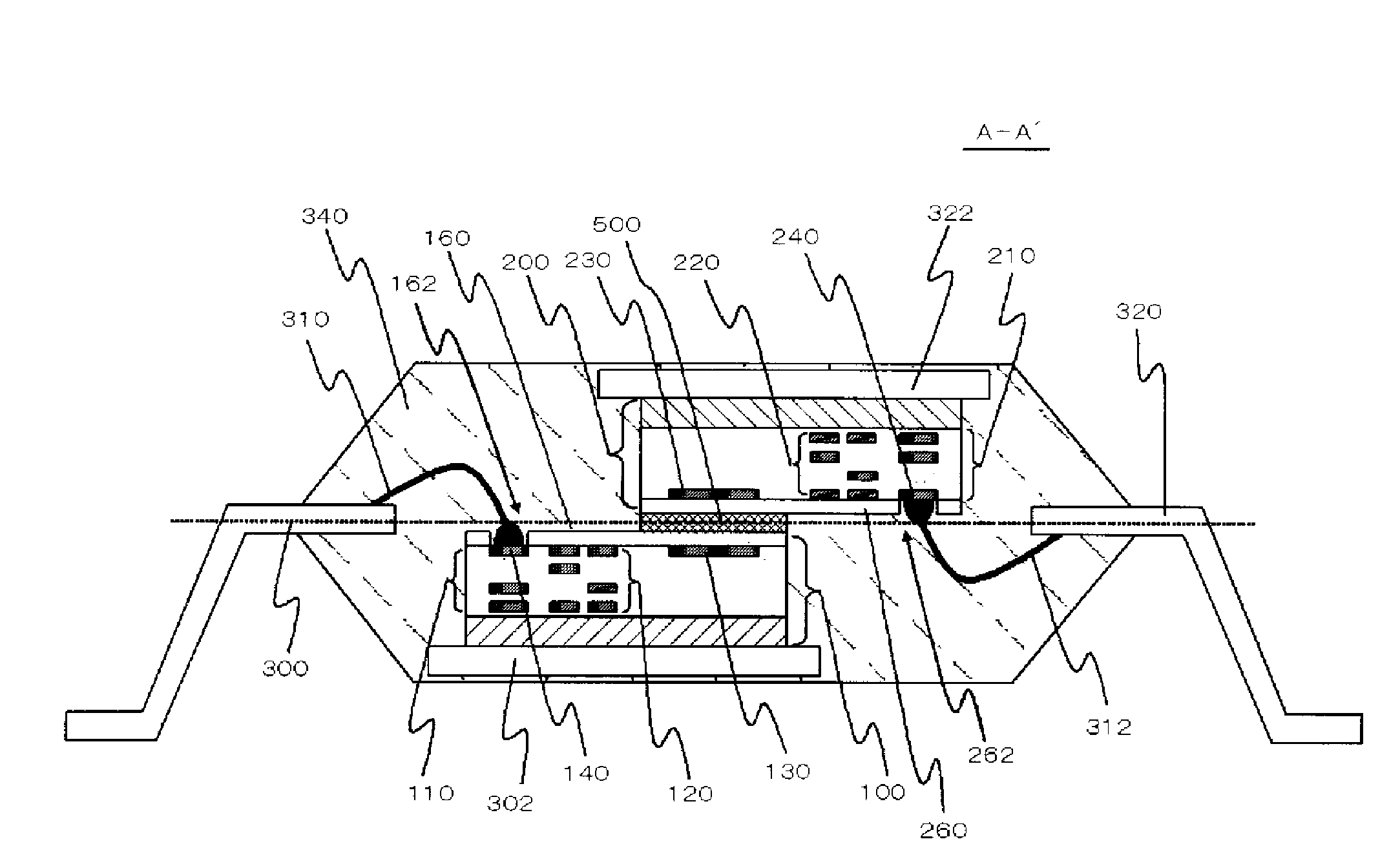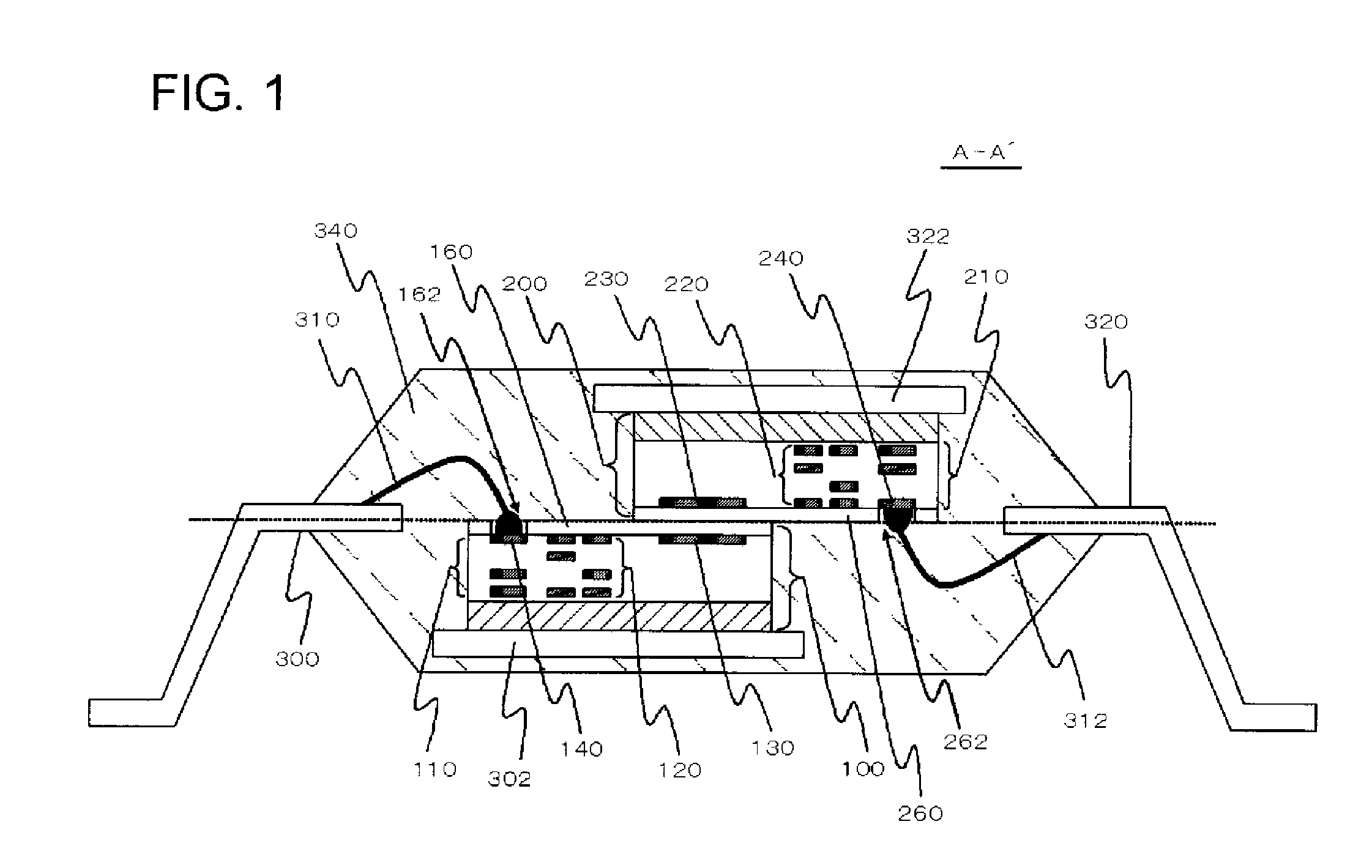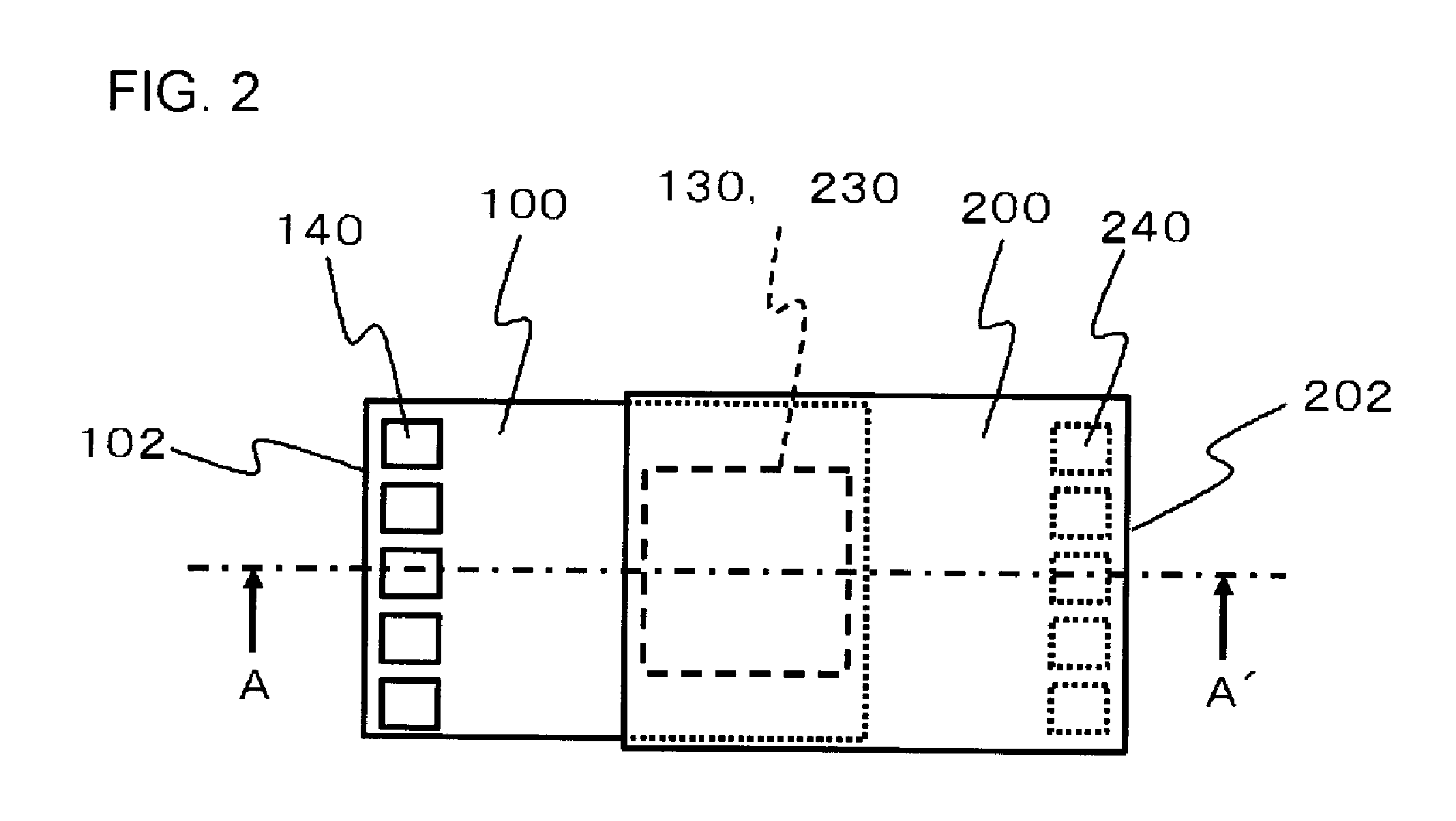Semiconductor device, method of manufacturing semiconductor device, and lead frame thereof
a semiconductor device and semiconductor technology, applied in semiconductor devices, semiconductor/solid-state device details, electrical apparatus, etc., can solve the problems of increased difficult to follow electric signals, and difficult to reduce the size of photo-couplers, so as to prevent the manufacturing cost of semiconductor devices from increasing, the coupling coefficient of inductors is raised.
- Summary
- Abstract
- Description
- Claims
- Application Information
AI Technical Summary
Benefits of technology
Problems solved by technology
Method used
Image
Examples
first embodiment
[0047]FIG. 1 is a cross-sectional view illustrating a configuration of a semiconductor device according to a The semiconductor device has a first semiconductor chip 100 and a second semiconductor chip 200. The first semiconductor chip 100 has a first multilayer interconnect layer 110 and a first inductor 130. The first inductor 130 is formed in the first multilayer interconnect layer 110. The second semiconductor chip 200 has a second multilayer interconnect layer 210 and a second inductor 230. The second inductor 230 is formed in the second multilayer interconnect layer 210. The first semiconductor chip 100 and the second semiconductor chip 200 are overlapped in a direction in which the first multilayer interconnect layer 110 and the second multilayer interconnect layer 210 are opposed to each other. When seen in a plan view, the first inductor 130 and the second inductor 230 are overlapped. The first semiconductor chip 100 and the second semiconductor chip 200 have non-opposed ar...
second embodiment
[0081]According to the embodiment, the same advantages as the first or second embodiment can be obtained.
[0082]FIG. 11 is a plan view of a semiconductor device according to a fourth embodiment, and corresponds to FIG. 10 of the third embodiment. The semiconductor device according to the embodiment has the same configuration as the semiconductor device according to the third embodiment, except that the first semiconductor device 100 and the second semiconductor device 200 obliquely deviate when seen in a plan view.
[0083]According to the embodiment, the same advantages as the first or second embodiment can be obtained.
[0084]FIG. 12 is a cross-sectional view of a semiconductor device according to a fifth embodiment, and corresponds to FIG. 1 of the first embodiment. The semiconductor device according to the embodiment has the same configuration as the semiconductor device according to the first embodiment, except that the first inductor 130 is formed in an interconnect layer other than...
eighth embodiment
[0105]Then, as shown in FIG. 19, the second semiconductor chip 200 is mounted over the first semiconductor chip 100. The method of mounting the second semiconductor chip 200 is the same as the
[0106]Then, as shown in FIG. 20, the first semiconductor chip 100 and the lead 306 are connected to each other by the first bonding wire 310, and the second semiconductor chip 200 and the lead 308 are connected to each other by the second bonding wire 312. Processes thereafter are the same as described in the first embodiment. The leads 306 and 308 can be bent toward the first semiconductor chip 100.
[0107]According to the embodiment, the same advantages as the eighth embodiment can be obtained. When providing the bonding wire 312, the bonding wire 312 does not easily interfere with a stage of a bonding device due to the thickness of the die pad 322.
[0108]FIG. 21 is a cross-sectional view illustrating a configuration of a semiconductor device according to a tenth embodiment. The semiconductor de...
PUM
 Login to View More
Login to View More Abstract
Description
Claims
Application Information
 Login to View More
Login to View More - R&D
- Intellectual Property
- Life Sciences
- Materials
- Tech Scout
- Unparalleled Data Quality
- Higher Quality Content
- 60% Fewer Hallucinations
Browse by: Latest US Patents, China's latest patents, Technical Efficacy Thesaurus, Application Domain, Technology Topic, Popular Technical Reports.
© 2025 PatSnap. All rights reserved.Legal|Privacy policy|Modern Slavery Act Transparency Statement|Sitemap|About US| Contact US: help@patsnap.com



